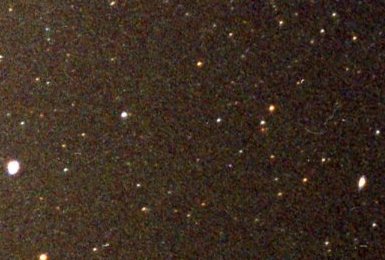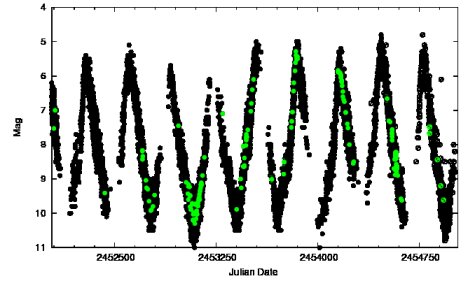
 |
Deep red R Leonis, one of the first long-period variables known, lies in Leo to the right of center just beneath a somewhat brighter white star. Regulus (Alpha Leonis) appears at far left, Subra (Omicron Leo) at lower right. At minimum light the star would be gone, beneath the limit of the image presented here. |
 |
Three thousand days in the variation of R Leonis are plotted as visual magnitudes versus the running count of Julian Day number, which begins January 1, 4713 BCE. JD 2452500 is August 13, 2002, 2454750 October 10, 2008. Not only does the star vary over its 312-day period, but the maxima and minima vary from one cycle to the next and over longer periods of time as well. Courtesy of the American Association of Variable Star Observers (AAVSO). |